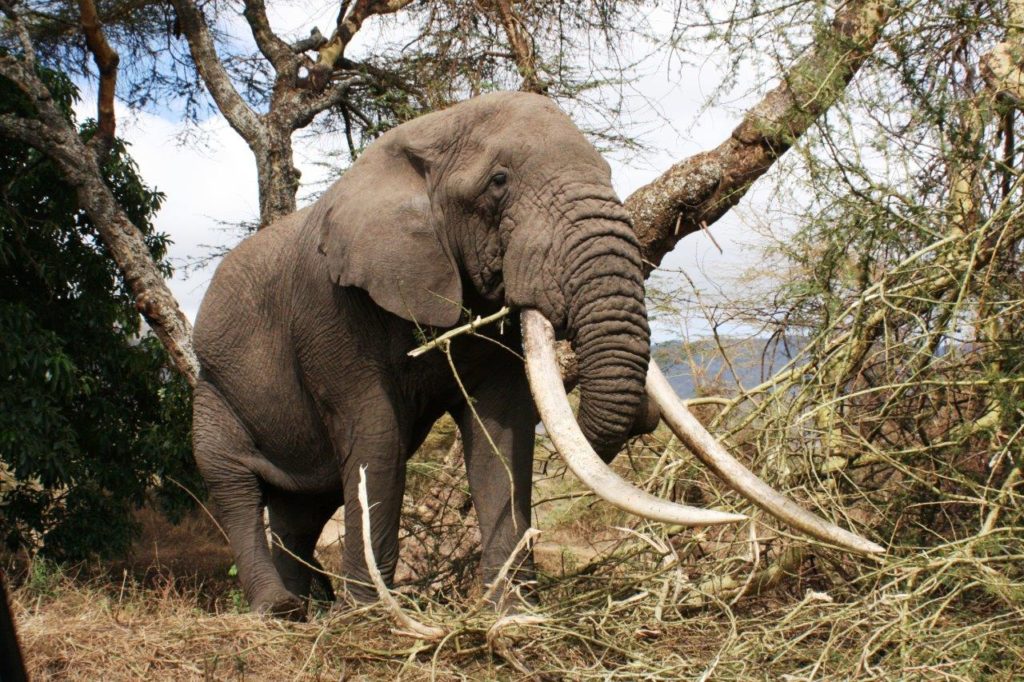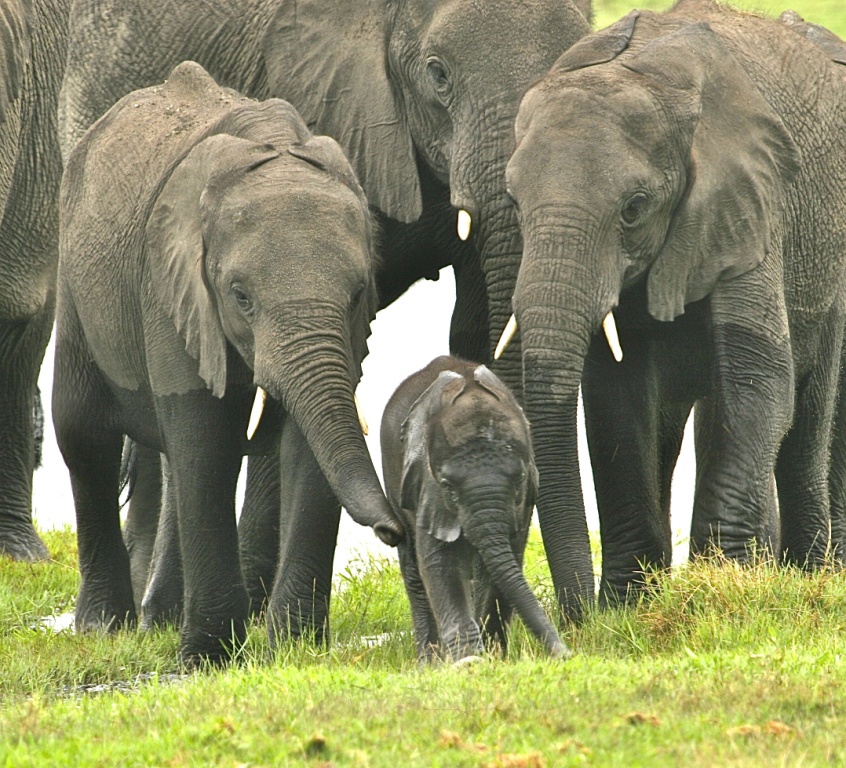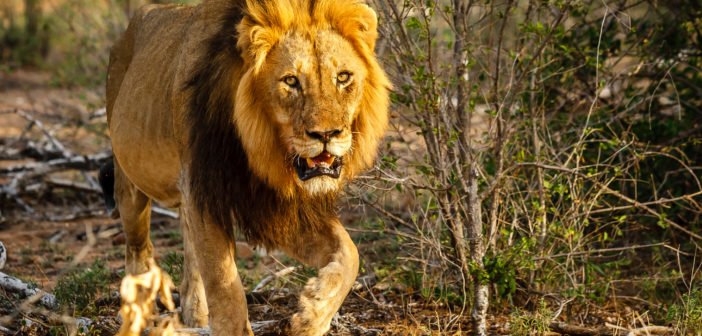A recent letter published in the journal Science argues that banning trophy hunting imperils biodiversity, which simply doesn’t stack up.
The letter’s authors present arguments which, in their opinions, offer a compelling scientific case for trophy hunting, even if they find the act itself repugnant.
Persistent caveats
The letter aims to bolster its ostensible scientific strength through a supplementary list of 128 signatories. The inclusion of these 128 signatories constitutes a fallacious appeal to authority. It is indicative of a strange but prevalent view that simply because a scientist makes a statement, that statement is somehow imbued with scientific rigor.
But a statement in speculation remains a statement in speculation regardless of whether it is made by a scientist.
Moreover, many of the names on the list of 128 belong to people who are not scientists by any stretch of the imagination. Some lack credentials entirely and some have a vested interest in the trophy hunting industry. The attempt to use the list as some kind of show of scientific consensus is problematic.
Added to this, caveats are ever-present in arguments favoring trophy hunting as a conservation tool, and this letter is no different. In the space of a few hundred words, the authors recognize that “poorly managed trophy hunting can cause local population declines,” and “with effective governance and management trophy hunting can and does have positive impacts.”
Moreover, “there is considerable room for improvement, including in governance, management and transparency of funding flows and community benefits.” The problem is that these caveats constitute conditions for efficacy that are hardly ever realized in practice.
Arbitrary quotes
The Achilles’ heel of the pro-hunting argument is the story of the Selous Game Reserve in Tanzania, which allocates 19 of its 20 concessions to hunting. Despite this, the surrounding communities received hardly any benefits, and elephant populations were decimated over a five-year period between 2009 and 2014. This undermines the argument that wildlife population declines would be worse without hunting.

Pointing to a small sample size of a few well-governed instances does not outweigh the overwhelming evidence of hunting’s inadequacy as a conservation tool. The reason that good governance is not attained in reality is because hunting is subject to the free rider problem, whereby some individuals overuse or overburden a shared resource. While concession owners may have an interest in wildlife population growth, hunters themselves have every incentive to over-exploit the quotas in each concession.
The quotas themselves are often arbitrary, as it is extremely difficult to decide that each concession, for instance, gets to shoot 20 elephants a year. On what grounds, for instance, has the Botswana government decided that 400 is the ecologically correct number of elephants that should be shot annually?
In an open system, the incentive to lure animals from other concessions is strong, which leaves fewer animals available for photographic tourists to see. There is a serious collective action problem here that suggests that governance reforms are incentive-incompatible with the very nature of trophy hunting.
Science and ethics
It is peculiar that scientists think they are being true to science by ignoring their repugnance of trophy hunting. This subtly implies that ethics and science are somehow distinguishable and should be treated separately.
At best, there is a crude utilitarianism in play, where these scientists argue that the ends justify the means.
In other words, if a few animals are shot because a few wealthy people can afford to shoot them, and this ensures (speculatively) that the land is not converted to agriculture or other non-wildlife uses, then it is morally acceptable to allow trophy hunting.
But this backdoor appeal to consequentialism assumes that outcomes would be worse in the absence of hunting and ignores the importance of respect for individual animals (and the fact that removing the most impressive individuals has deleterious ecosystem and population-level impacts).
Biodiversity loss
The letter argues that “more land has been conserved under trophy hunting than under national parks.” This may be true, though the data used is quite dated now. Even so, this does not make it self-evident that the land could not have been conserved in the absence of trophy hunting.
Land can be conserved through paying community members cash in hand for not over-exploiting it. Examples such as Carbon Tanzania demonstrate that such payments (for carbon credits, for example) can be enormously successful for conserving wild spaces.
The letter goes on to argue that “ending trophy hunting risks land conversion and biodiversity loss.” Not ending trophy hunting carries similar risks. Shooting the elephants with the biggest tusks, for instance, means shooting the most reproductively successful animals, who also play a crucial role in maintaining ecosystem functionality and herd sociology.

Shooting the lions with the biggest manes similarly undermines pride functionality. In both instances, the genetic selection effects are pronounced and problematic for biodiversity loss.
Again, the implicit assumption is that the land would not be conserved in the absence of hunting, which is untested as there is no counterfactual. The lack of a counterfactual is not an argument in favor of trophy hunting.
Corrupt industry
Perhaps no one will argue with the letter’s claim that “hunting reforms should be prioritized over bans unless better land-use alternatives exist.” But this suggests that hunting reforms can be effective.
The Selous Game Reserve example does not inspire confidence, and the extent of corruption in Botswana’s hunting industry prior to the 2014 hunting moratorium also raises questions.
The argument also suggests that better land-use alternatives are unlikely. This simply shows a lack of development imagination. Why should we continue to depend on the global north – rich, white, wealthy elites displaying an extractive chauvinism – to throw trinkets and a bit of bushmeat to local communities? Deepening existing global inequalities instead of finding home-grown solutions is offensive.
In addition, while trophy hunting can provide income for marginalized and impoverished people, the question is whether it should provide that income. Evidence, conveniently ignored, suggests that income from trophy hunting is full of leakage away from communities, and ultimately very little of the revenue actually ends up benefiting communities.
Rural poverty is also a function of complex, interacting factors such as corrupt elites in government. Perhaps most frustrating in this argument is that fact that trophy hunting, the colonial excesses of which created the need for establishing protected areas in the first place, disenfranchises local communities and makes them dependent on their colonizers once more.
Viable alternatives
The letter wrongly assumes that land-use options are binary, ignoring all manner of alternative uses. What matters is scale-appropriate planning.
For instance, in Botswana, the most important ecosystem consideration is to identify and protect migratory corridors and seasonal movement. Conservation-friendly agriculture needs to map onto the contours of these corridors.
This needs to be integrated with tourism plans. Tourism is not only photographic; self-drive options, adventure tourism and mobile camps are all alternatives to photographic safaris that have lower ecological footprints and ensure counter-poaching presence. Many areas would be well-served by these options, but nobody bids for them in the absence of hunting when governments do not make them available as options.
Now we have this argument that hunting bans didn’t work and therefore we need hunting again. The problem is not the lack of hunting; it’s the lack of even considering appropriate alternatives.
Major threats
Aiming to end trophy hunting because it is morally repugnant, ecologically destructive (for elephants and lions at least) and exacerbates dependence on wealthy whites, forces us to think about alternatives that effectively address the major threats to wildlife.

Major threats to wildlife include habitat destruction and fragmentation, as well as the illegal wildlife trade.
Paying community members directly through a carbon credit system, for instance, is far more likely to yield ecological and economic sustainability than trophy hunting. If community members are being paid to keep migratory corridors open and farm in conservation-compatible ways, for instance, threats to wildlife will be significantly reduced.
Moreover, these alternatives avoid the governance problems associated with community trusts that are typically riddled with power politics, gatekeeping and in-fighting over how revenues are to be allocated.
Chauvinist extraction
Trophy hunting does not provide agency or self-determination. If anything, it deepens dependency on wealthy ‘donors’ (hunters) and overshadows the possibility of developing more appropriate home-grown alternatives.
Maintaining the status quo out of fear that banning trophy hunting might not work is insulting to local African communities. The subtle message is that Africans are not capable of finding other ways of protecting their biodiversity and therefore need to remain dependent on chauvinist extraction to survive.
This is deeply insulting. A deeper look at the letter demonstrates a matter of stacking the decks. No argument advanced stands up on its own merits but taken together the unsuspecting reader may be persuaded of the merits of trophy hunting. This should be avoided.
Featured image: a male lion in South Africa. Image credit Charlie Lynam.





